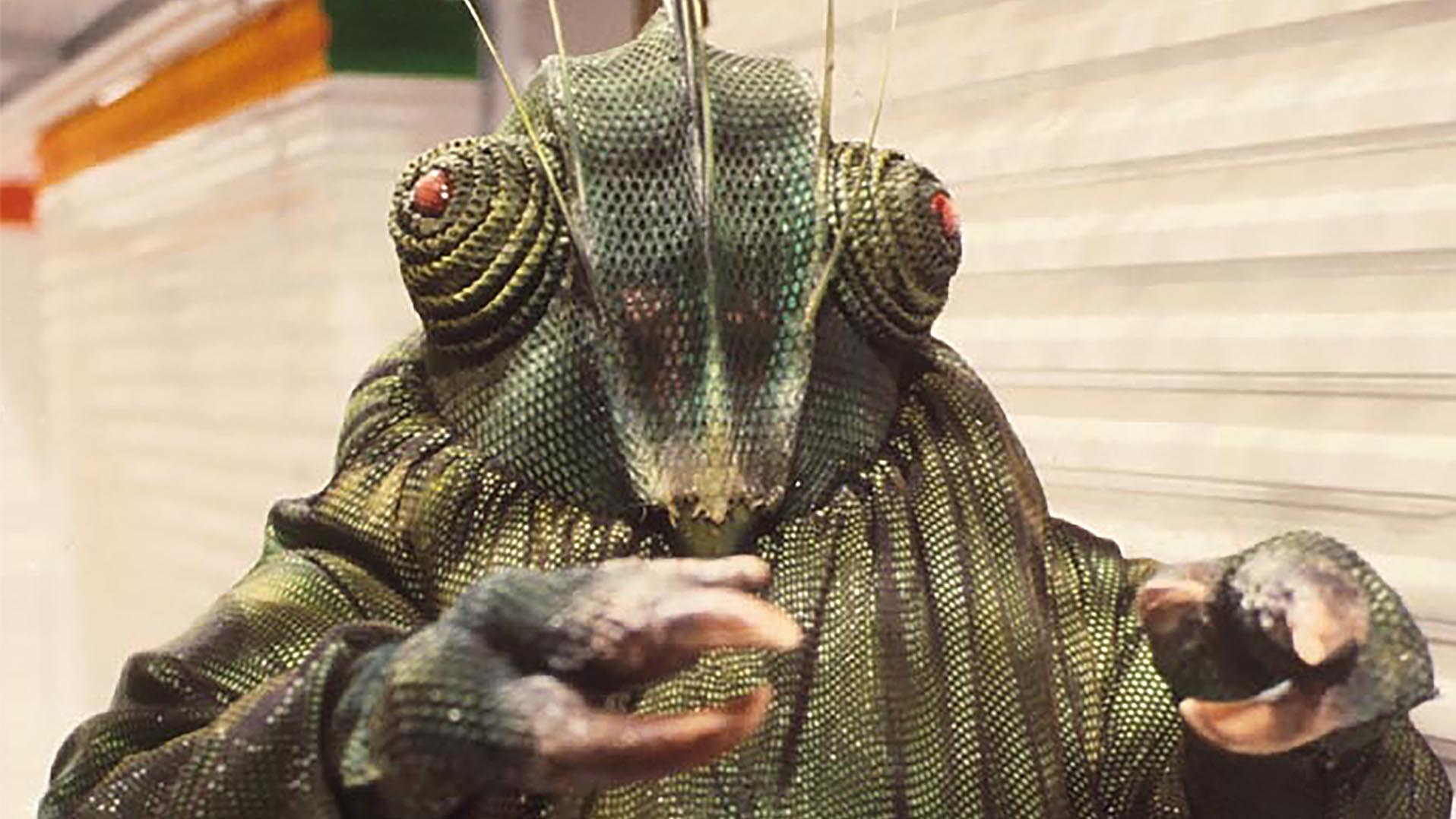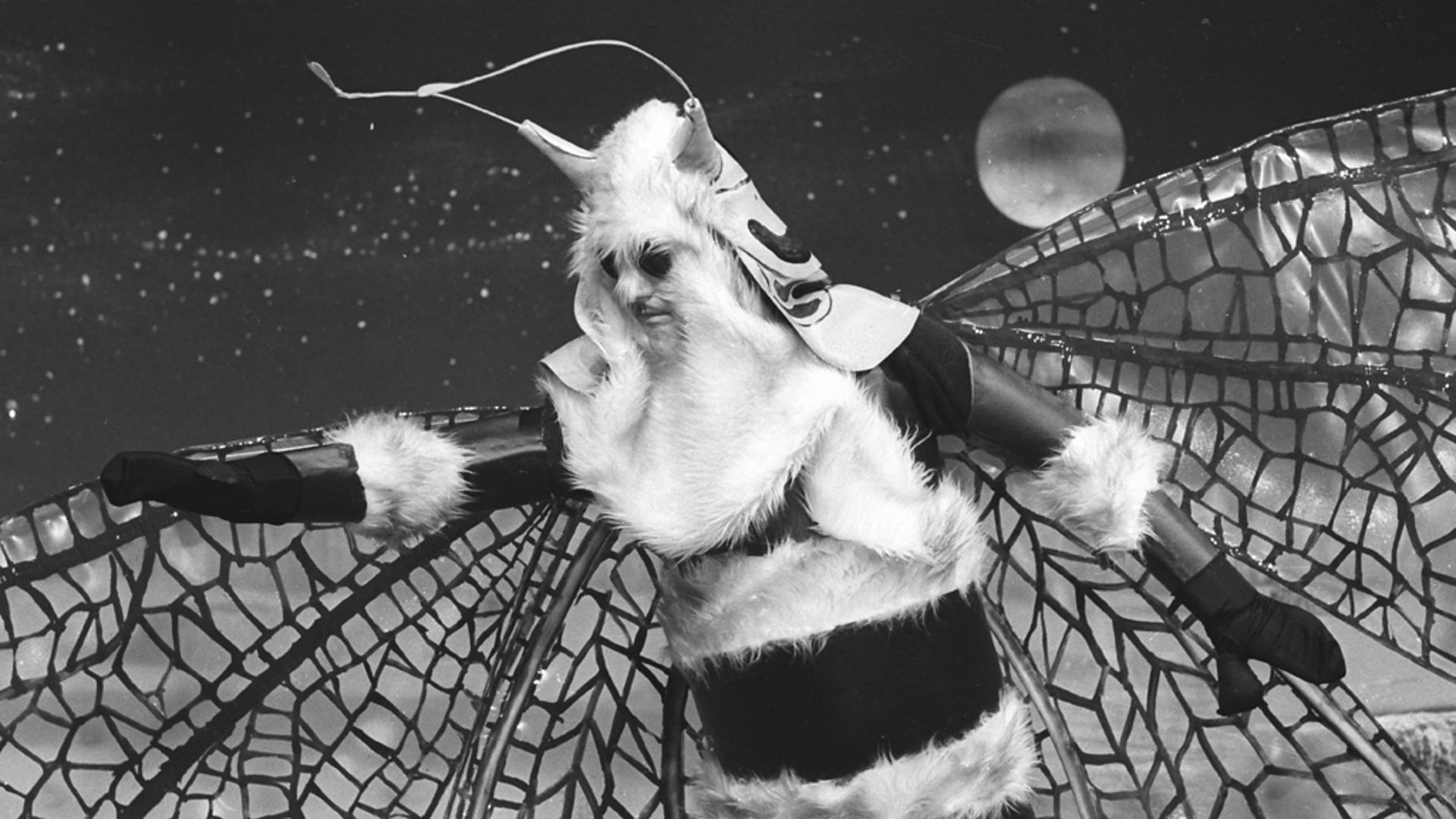TARDIS Safari: 10 'Doctor Who' Aliens That Look a Lot Like Earth Animals
Evolution is a funny business. Did you know, for example, that unrelated groups of crustaceans have spontaneously evolved into crabs multiple times over the millions of years since life first emerged on Earth? It’s so common an occurrence that it has its own name: carcinization.
Something similar must be at play in the Doctor Who universe. The faces and body parts of Earth fauna have appeared on alien races across the universe with similarly uncanny regularity during the Doctor’s travels. Let's take a closer look!
1. Lupari
The Lupari are the latest and friendliest (to man, at least) of the many species the Doctor has encountered that have familiar faces to Earthlings. They look like dogs, although if Karvanista is anything to go by, they sound like grumpy men from the north of England. In any case, Lupars fulfilled their remit as man’s best friend by protecting the citizens of Earth from the Flux – first by doling out individual humans to look after (or kidnap, the jury’s still out on that one), and then, at the Doctor’s behest, syncing their ships into a formidable shield to protect the planet. Who’s a good boy? You are, yes you are, yes you are.
2. Judoon
This lot are slightly less on the side of the angels – although technically they are law enforcement officers, so make of that what you will. The Judoon are overly officious (and tetchy) space cops with rhino faces who dress like S&M goths and talk in a language that only has one vowel sound. This must make their poetry very easy to write, but it does not make for good company, much like their horned face-sakes on Earth. Small wonder that the Doctor spends so much time trying to thwart their brutal version of interplanetary justice.
3. Zarbi/Menoptera

(Photo: BBC)
One of early Doctor Who’s most ambitious stories concerns the TARDIS’s arrival on the planet of Vorbis, where two rival species of insectoid life were locked in battle. There’s the mothlike Menoptera and the mantis-ish Zarbi. And while the First Doctor, Ian, Barbara and Susan had already encountered huge ants when they were shrunk down to tiny size in “Planet of Giants,” the Zarbi are a far more formidable foe. You don’t see ants using gold to control human minds, for starters. Then again, you don’t see Menoptera flying around lampposts in the dead of night.
4. Catkind
The Doctor has come across cat-faced people a few times, most notably the Sisters of Plenitude (“New Earth”) and their unsavory human germ farm. Though in a way, it’s not all that surprising that they would choose that route to solve the problem of treating incurable diseases. Cats are not known for their nurturing nature, and they’re often quite cruel to their food, so it’s not a huge jump to consider them kind of malevolent, even when they’re being carers. Mind you, the cat/human family in “Gridlock” were lovely, so maybe it’s #notallcats.
5. Macra
Speaking of crabs, the Second Doctor had to face down some enormous crustaceans with very crablike claws that came from the planet Macra. The species evolved to feed on gases that were poisonous to humans, but they’d eat human settlers too, given the chance. They were later found (in a state of evolutionary decline) by the Tenth Doctor in New New York, way below his new cat friends in “Gridlock,” just eating up exhaust fumes and generally causing trouble.
6. Tivoli
The expression “are you a man or a mouse?” is particularly vexing when applied to the natives of Tivoli. If we’re speaking figuratively, they are a species whose survival tactic when faced with aggression is not so much to give in as to help facilitate further tyranny. The school motto of Gibbis, who managed to undermine the Doctor’s best efforts to deal with a sentient prison ship in “The God Complex,” was "Resistance is Exhausting,” so we are not dealing with lion-hearted interstellar patriots. If we’re speaking literally, as they do look a lot like mice, so maybe it’s not such a hard question to answer after all.
7. Foamasi
 (Photo: BBC)
(Photo: BBC)
Under normal circumstances, you don’t really see eyes like chameleon eyes anywhere other than on a chameleon’s face. And yet, the Foamasi – reptilian humanoids with exceptional resistance to radiation, who met the Fourth Doctor in “The Leisure Hive” – also developed the kind of independent swivel-orbs that would suit color-shifting, fly-eating lizards with really long tongues. And speaking of tongues, the Foamasi were physically incapable of speaking any human languages, as their mouths were not capable of making the noises.
8. Leonians
Big cats have had something of a raw deal in Doctor Who history. It is definitely scary to try and deal with a humanoid that has the face of a lion – like the Leonians of Delta Leonis do – so why do they also need to be able to breathe fire? That feels like overkill for the king of the beasts. And the eponymous Cheetah people of Cheetah World (“Survival”) only took on their furry form after prolonged exposure to a Cheetah virus. They didn’t evolve so much as mutate. Thundercats, it is not.
9. Tritovores
The Third Doctor had his battles with spider-like creatures known as the Eight-Legs on Metebelis III (“Planet of the Spiders”), and his Tenth incarnation had to deal with a race who had evolved the heads of flies (“Planet of the Dead”). Tritovores were basically human from the neck down, but had the big fly eyes and insectoid features from the neck up. Whether that means they’d land on your dinner and start eating at the drop of a hat has yet to be established. But we can always ensnare them in some Metebelian webs if they start to get feisty, or should that be fly-sty?
10. Pig Slaves
Okay, so the pig slaves of Manhattan aren’t exactly an alien race, but they were created by aliens – the worst aliens of them all. The Cult of Skaro Daleks made mutant hybrids from pigs and humans to do a lot of the heavy lifting work during their time in New York (“Daleks in Manhattan”). They had pig heads, human bodies and very short life-spans, because their Dalek masters did not care about life expectancy. They were more interested in creating humans with Dalek heads, which is a whole other world of radical mutation, as yet unseen in our reality.
Do you have a favorite alien species from Doctor Who history?